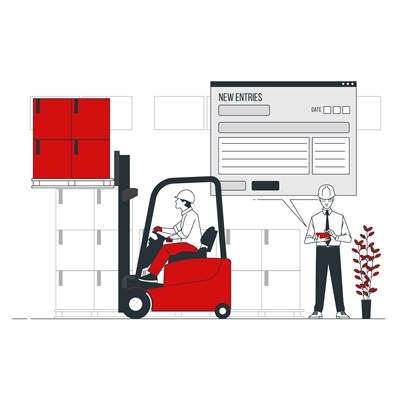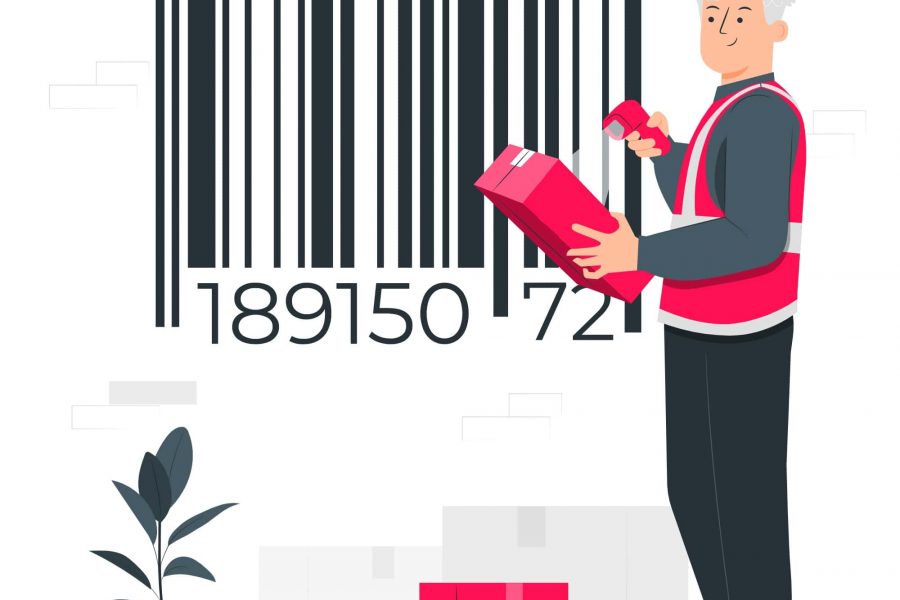What is RFID?
Radio Frequency Identification (RFID) refers to a wireless system comprised of two components: tags and readers. RFID belongs to a group of technologies referred to as Automatic Identification and Data Capture (AIDC). AIDC methods automatically identify objects, collect data about them, and enter those data directly into computer systems with little or no human intervention. Simply put RFID is a technology whereby digital data encoded in RFID tags or smart labels (defined below) are captured by a reader via radio waves.
RFID is similar to barcoding in that data from a tag or label are captured by a device that stores the data in a database. RFID, however, has several advantages over systems that use barcode asset tracking software. The most notable is that RFID tag data can be read outside the line-of-sight, whereas barcodes must be aligned with an optical scanner.
How does RFID work?
Every RFID system consists of three components: a scanning antenna, a transceiver and a transponder. When the scanning antenna and transceiver are combined, they are referred to as an RFID reader or interrogator. There are two types of RFID readers — fixed readers and mobile readers. The RFID reader is a network-connected device that can be portable or permanently attached. It uses radio waves to transmit signals that activate the tag. Once activated, the tag sends a wave back to the antenna, where it is translated into data.
The transponder is in the RFID tag itself. The read range for RFID tags varies based on factors including the type of tag, type of reader, RFID frequency and interference in the surrounding environment or from other RFID tags and readers. Tags that have a stronger power source also have a longer read range.
Where is RFID commonly used?
- Asset Management
- Inventory Management
- Livestock Tracking
- Vehicle Tracking
- Supply Chain Logistics
Use of RFID is prevalent in the following industries:
- Manufacturing
- Healthcare
- Retail
RFID is finding acceptability in almost every kind of business and home use too.
Take your first step towards Industry 4.0 with RFID based automation.
Seamless fixed asset & inventory management.
What are RFID tags and smart labels?
RFID tags are made up of an integrated circuit (IC), an antenna and a substrate. The part of an RFID tag that encodes identifying information is called the RFID inlay.
There are two main types of RFID tags:
- Active RFID. An active RFID tag has its own power source, often a battery.
- Passive RFID. A passive RFID tag receives its power from the reading antenna, whose electromagnetic wave induces a current in the RFID tag’s antenna.
There are also semi-passive RFID tags, meaning a battery runs the circuitry while communication is powered by the RFID reader.
Low-power, embedded non-volatile memory plays an important role in every RFID system. RFID tags typically hold less than 2,000 KB of data, including a unique identifier/serial number. Tags can be read-only or read-write, where data can be added by the reader or existing data overwritten.
The read range for RFID tags varies based on factors including type of tag, type of reader, RFID frequency, and interference in the surrounding environment or from other RFID tags and readers. Active RFID tags have a longer read range than passive RFID tags due to the stronger power source.
smart labels are simple RFID tags. These labels have an RFID tag embedded into an adhesive label and feature a barcode. They can also be used by both RFID and barcode readers. Smart labels can be printed on-demand using desktop printers, where RFID tags require more advanced equipment.
What we do?
We provide a complete RFID implementation solution for your company or a process in your business, recommend best suited RFID tags for the process, suggest the handheld or reader for the use case.
Read more about Asset Tagging, Physical Verification and Fixed Asset Management.


